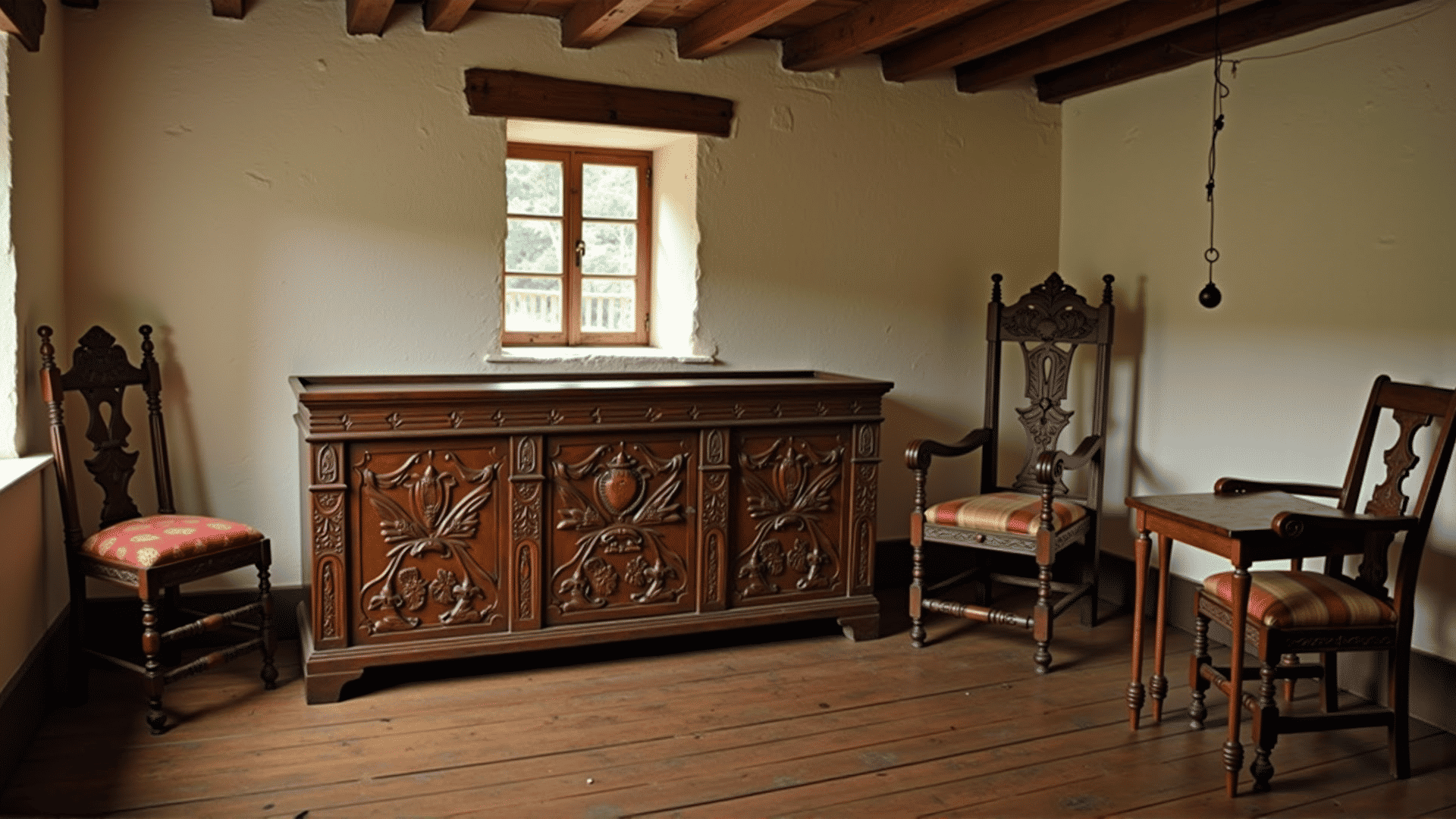Colonial America in the 17th and 18th centuries was a melting pot of cultures and craftsmanship, as European settlers brought their traditions and skills to the New World. The artifacts crafted during this period provide a glimpse into how European practices were harmonized with the available resources and native artistry, creating distinctive pieces of utility and beauty.
The initial settlers arrived with limited resources and a pressing need to adapt to their new environment. The furniture they created was primarily influenced by the styles from their countries of origin, notably England, France, the Netherlands, and Spain. Each of these cultures contributed its own aesthetic and structural preferences, resulting in a rich tapestry of design elements.
British design strongly influenced early American creations, particularly in New England. The Jacobean style, known for its robust and straightforward construction, was popular during the early colonial period. It was characterized by its use of oak, known for its durability, and was often adorned with carved geometric patterns and motifs. Artisans in America adopted and modified these designs, taking advantage of local woods such as maple, cherry, and walnut, which offered new color palettes and grain patterns.
The transition from the Jacobean to the William and Mary style brought lighter, more delicate furnishings to the colonies. This style, influenced by Dutch design, introduced turned legs, ball feet, and veneered surfaces. Cabinetmakers in urban centers like Boston and Philadelphia began to incorporate these elements, showcasing a move towards more refined and intricate works.
In the Southern colonies, particularly in Virginia and the Carolinas, the influence of French and Spanish styles was more pronounced. These areas saw the introduction of the Baroque and Rococo forms, known for their ornate detailing and curvilinear lines. Craftsmen working for the wealthier planter class embraced these lavish styles, which necessitated skilled carving and joinery, often utilizing mahogany imported through trade.
Cross-cultural exchange with Native Americans also played a role in shaping colonial creations. Native craftsmanship, which was adept at utilizing available materials, inspired settlers to adopt techniques that were efficient and sustainable. The use of natural materials like hickory and pine, coupled with native methods of bending and joining wood, influenced the functional and stylistic decisions of colonial artisans.
As the colonies grew and economies expanded, regional styles began to emerge, each reflecting a blend of imported European traditions and local innovations. The Pennsylvania Dutch, for instance, developed a vernacular style that combined German, Swiss, and Alsatian influences, known for its decorative painting and distinctive color palettes.
By the late 18th century, as America neared independence, the neoclassical style gained popularity, echoing the broader transatlantic move towards clean lines and classical forms. This style, inspired by the ancient arts of Greece and Rome, was imbued with a sense of proportion and simplicity, highlighting the evolving identity of the new American nation.
In essence, early American furniture represents a fascinating fusion of Old World influences and New World ingenuity, where European aesthetic traditions were seamlessly interwoven with native techniques and materials. This blend not only met the practical needs of the burgeoning colonies but also laid the foundation for the rich and diverse design heritage that continues to evolve in America today.
